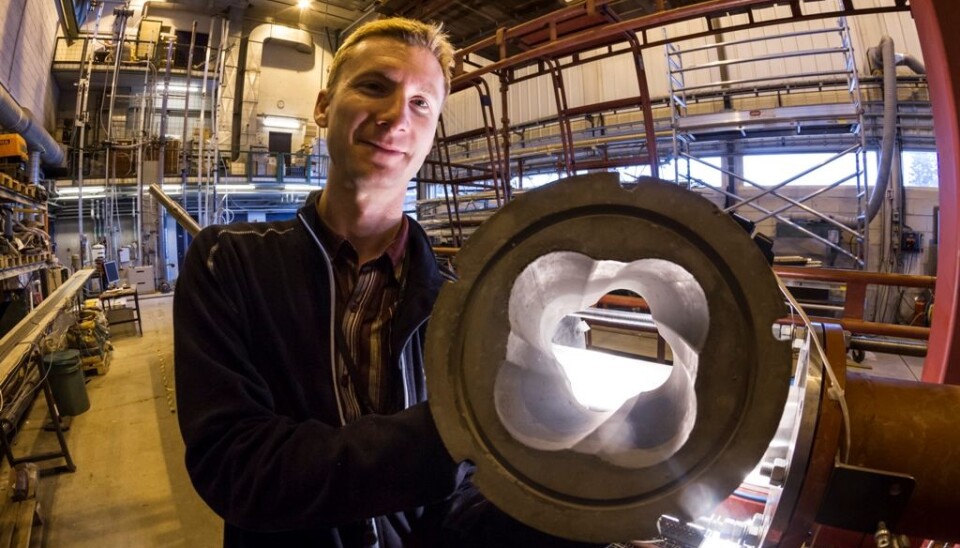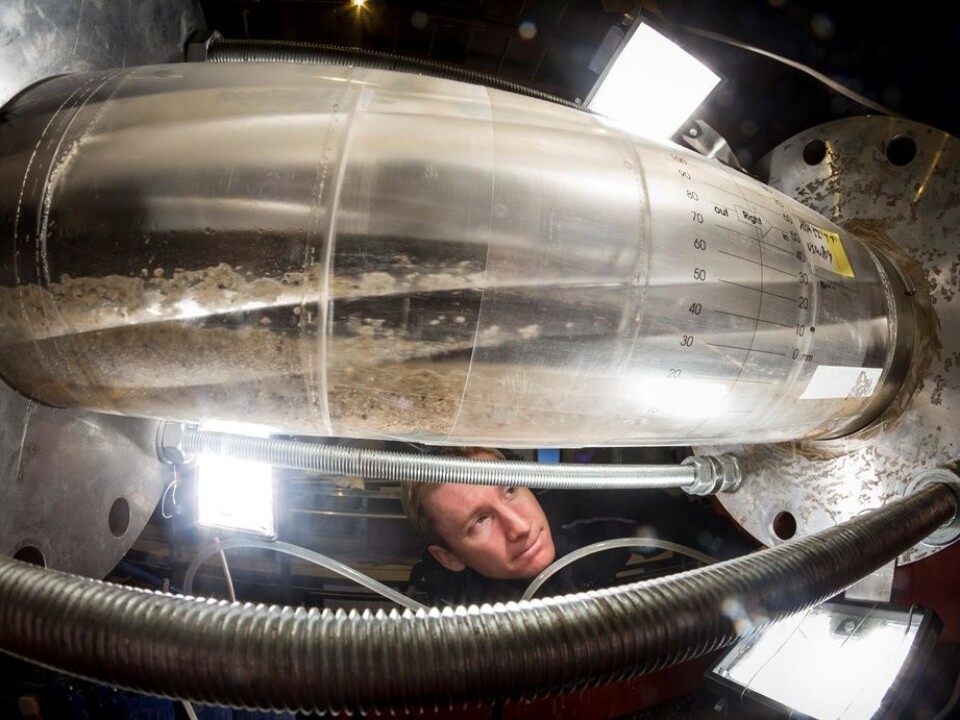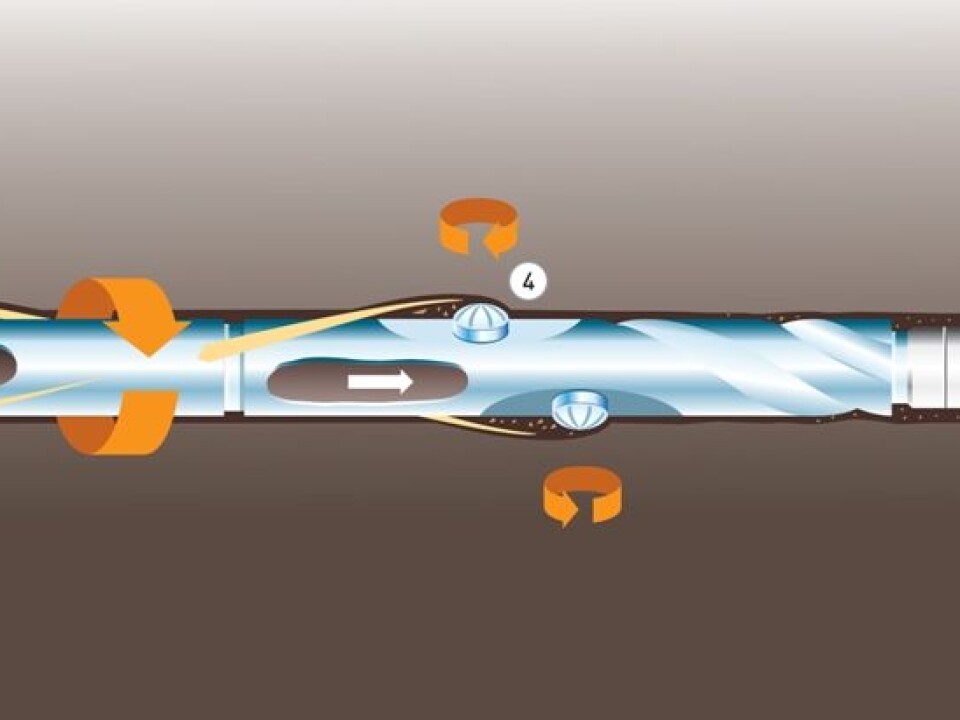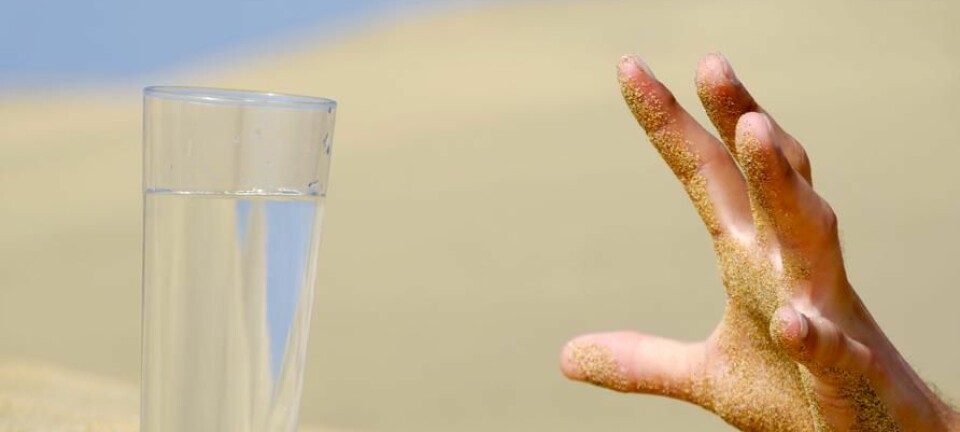An article from Norwegian SciTech News at SINTEF

Drilling tool can give millions in pocket money
A new-born “mole” homes in on small oil reservoirs – an almost untapped source of income.
Denne artikkelen er over ti år gammel og kan inneholde utdatert informasjon.
An innovative new oil-drilling tool concept has seen the light of day.
The tool is being developed by scientists at SINTEF Petroleum Research, and has characteristics that will enable it to take on a number of different tasks.
One of these is to bring up oil from small oil-filled pockets that lie close to large fields on the continental shelf. Although any single pocket may seem to be insignificant, taken together they hold valuable quantities of oil.
Extra set of teeth
The most important characteristic of the newly developed mole is very visible; it has one “row of teeth” more than other drilling tools.

Although the equipment as such is still on the drawing board, the researchers have used a 12 metre-long model of an oil-well to show how it will work by recreating the imprints – spiral grooves - that the extra teeth would leave in the wall of the well.
Oil-well with branches
Tests in the well model have shown that the grooves improve efficiency of cleaning out the wellbore; i.e. removal of drilling cuttings.
“We believe that the new tool will make it easier to drill branches from existing wells out to nearby pockets of oil,” says project manager Jan David Ytrehus.
Just how the cleaning of the “mole” can be utilised to achieve this is described below. But first, a little petroleum geology:
Cheaper drilling

The oil-bearing strata on the Norwegian shelf probably contain many thousands of small oil-filled pockets, and reservoir experts believe that we have just as much oil left out there as we have produced from all the major discovered fields together.
“If we explore and drill in the traditional manner, many small reservoirs will remain unprofitable and undisturbed. But if we can drill from existing wells, costs will be significantly reduced, and such “dwarf” reservoir close to the giants will become worth exploiting,” says Ytrehus.“
This will be a very efficient way of enhancing oil recovery rates.”
Equal to several sovereign wealth funds
One of Norway’s experts in petroleum research who is very interested in small unexploited reservoirs is Hans Borge, who directs the Department of Petroleum Technology at the University of Stavanger. Borge believes that the Norwegian continental shelf houses anywhere between 1000 and 100 000 pockets of hydrocarbons.
According to Borge, the greatest challenge lies in knowing exactly where these small deposits are to be found.
He also points out that combined exploration and production wells will be a sensible strategy for Norway to adopt in the hunt for pockets of oil.
Valuable percentages
The department head estimates that one percent of the pockets lie less than one kilometre from a reservoir from which we are already producing hydrocarbons.
“A single percentage may not sound like much, but there is good reason to believe that in that one percent of pockets lies oil worth several hundred million euros. And no matter which Norwegian oil-field you are on, there will always be small unexploited reservoirs in the vicinity,” says Borge.
Teeth all around the drill-bit
If the new drilling tool meets the expectations raised by the laboratory results, Ytrehus believes that we could envisage drilling out to pockets up to a kilometre from current wells, if not even further.
But why should this new drilling tool be able to drill its way onwards from existing wells? And why is it difficult to do this using traditional equipment?
--------------------------------
Read the Norwegian version of this article at forskning.no


































